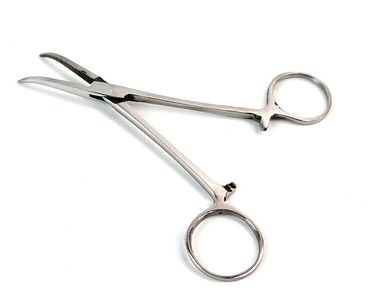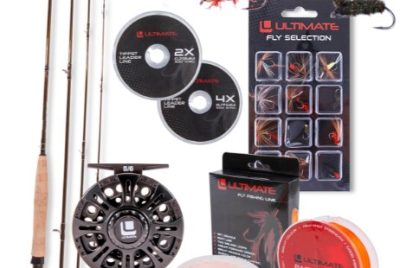Fly Fishing Pliers
Introduction
As an avid fly angler, I’ve discovered that the right tools can make all the difference in a successful day on the water. Fly fishing pliers are one such tool that often doesn’t get the attention it deserves. In this article, we’ll delve into the world of fly fishing pliers, exploring their significance, different types, materials, and essential features. I’ll also provide valuable tips on maintenance, safety, and customization, along with recommendations for the best brands and models. So, join me on this journey as we unlock the world of fly fishing pliers and understand why they’re an essential companion for anglers.
Why Fly Fishing Pliers Are Essential
In the world of fly fishing, having the right tools can mean the difference between a successful day on the water and a frustrating one. Fly fishing pliers are an often overlooked, yet essential tool for anglers. These versatile pliers serve a variety of functions, from removing hooks to crimping split shot weights, cutting lines, and more. Their significance becomes apparent when you find yourself in situations where precision and control are paramount. Fly fishing pliers are your multi-purpose tool for various tasks, ensuring that you’re well-prepared to handle any fishing scenario.
Types of Fly Fishing Pliers
Fly fishing pliers come in various types, each tailored to specific tasks. We’ll explore different styles, such as needle-nose, hemostat, and forceps pliers. Each type has its unique features and purposes, making them suitable for different aspects of fly fishing. Understanding these variations will help you choose the right tool for the job.
Needle-nose pliers, for example, are excellent for removing hooks, while hemostats are perfect for delicate tasks like securing tiny flies. Forceps pliers, with their serrated jaws, provide a strong grip and are ideal for gripping and holding items securely. Depending on your fishing needs and preferences, you’ll want to have the right type of fly fishing pliers in your tackle box.
Selecting the Right Material
Fly fishing pliers are available in various materials, including aluminum, stainless steel, and titanium. Each material offers distinct advantages. Aluminum pliers are lightweight and resistant to corrosion, making them suitable for freshwater fishing. Stainless steel pliers are durable and can handle both freshwater and saltwater environments, but they may be heavier. Titanium pliers are the top choice for saltwater anglers due to their exceptional strength and corrosion resistance.
The choice of material should be based on the type of fishing you plan to do and the environments you’ll encounter. Selecting the right material ensures that your fly fishing pliers will withstand the conditions they’re exposed to.
Size and Weight Matters
When it comes to fly fishing pliers, size and weight are critical factors. The pliers’ size and weight can affect your angling experience, especially if you’re out on the water for extended periods. Lightweight pliers are generally preferred, as they minimize fatigue during long fishing days. However, heavier pliers may offer more durability and stability.
The choice between size and weight depends on your fishing style and preferences. For backpacking and on-the-go fishing, lighter pliers are a practical choice. For heavy-duty fishing in challenging conditions, the durability of slightly heavier pliers may be more important.
Essential Features and Functions
A good pair of fly fishing pliers should have certain key features and functions that enhance your fishing experience. These features include smooth jaws for handling delicate flies, cutting ability for lines and tippets, and ergonomic handles for comfort during use. Smooth jaws are essential for minimizing damage to hooks and flies, ensuring a secure grip without harming the delicate materials.
Cutting ability is another vital function, allowing you to trim lines and tippets with ease. Ergonomic handles ensure a comfortable grip and reduce hand fatigue during extended use. When selecting fly fishing pliers, pay close attention to these features to ensure they meet your angling needs.
Maintenance and Care
Proper maintenance and care are crucial for extending the life of your fly fishing pliers. These tools are exposed to water, salt, and fish slime, which can lead to corrosion and reduced performance. Regular cleaning and lubrication are essential. After each fishing trip, rinse your pliers with freshwater to remove salt and debris. Thoroughly dry them before storing to prevent rust.
Periodically apply a thin layer of lubricant to pivot points and springs to maintain smooth operation. Proper care ensures that your fly fishing pliers remain reliable and functional for many seasons of angling adventures.
Safety and Best Practices
When using fly fishing pliers, safety should always be a top priority. These tools have sharp jaws and cutting edges that can cause injuries if not handled with care. Always point the pliers away from your body and any bystanders when using them. Exercise caution when cutting lines, and make sure your hands are clear of the cutting area.
Additionally, use pliers with rubber or coated handles to prevent slips and improve grip. Safety is paramount in fly fishing, and taking the necessary precautions when using pliers ensures a worry-free angling experience.
Brands and Models
Selecting the right brand and model of fly fishing pliers can be a daunting task with so many options available. To make the choice easier, I’ve researched and compiled recommendations for notable brands and models known for their quality and durability. These pliers have received positive reviews from anglers and are trusted by the fly fishing community. Brands like Orvis, Abel, and Umpqua offer a range of pliers to meet different angling needs, whether you’re a novice or seasoned angler.
DIY Fly Fishing Pliers Modifications
If you’re a tinkerer and enjoy customizing your gear, you can explore DIY modifications for your fly fishing pliers. These modifications can enhance the pliers’ performance and make them even more suited to your specific fishing needs. You can add custom grips for better handling, attach a lanyard for easy access, or even make adjustments to the cutting mechanism.
Personalizing your pliers not only makes them unique but also enhances your overall angling experience. It’s an opportunity to tailor your tools to match your style and fishing requirements.
Conclusion
In conclusion, fly fishing pliers are a fundamental tool for anglers, often underestimated in their importance. The versatility and utility of these pliers make them an essential companion for fly fishing adventures. From handling delicate flies to securing hooks, cutting lines, and providing safety, these tools play a crucial role in your angling success. By selecting the right type, material, and size, and paying attention to essential features, you can enhance your fishing experience. Maintenance, safety, and custom modifications further contribute to the value of these tools. Whether you’re a novice or an experienced angler, fly fishing pliers are an indispensable part of your fishing gear.
FAQs
1. Can fly fishing pliers be used in saltwater and freshwater fishing?
- Yes, but it’s essential to select pliers made from corrosion-resistant materials like stainless steel or titanium for saltwater conditions.
2. How can I prevent my fly fishing pliers from rusting?
- Regularly rinse your pliers with freshwater after use, thoroughly dry them, and apply a thin layer of lubricant to pivot points and springs.
3. Are there any safety tips for using fly fishing pliers?
- Always point the pliers away from your body and others when using them. Be cautious when cutting lines and use pliers with rubber-coated handles for better grip.
4. Can I make DIY modifications to my fly fishing pliers?
- Yes, you can customize your pliers with grips, lanyards, and other modifications to enhance their performance and personalize them to your liking.
5. What are some well-known brands of fly fishing pliers?
- Notable brands known for their quality fly fishing pliers include Orvis, Abel, and Umpqua. These brands offer a range of pliers suitable for various angling needs.



